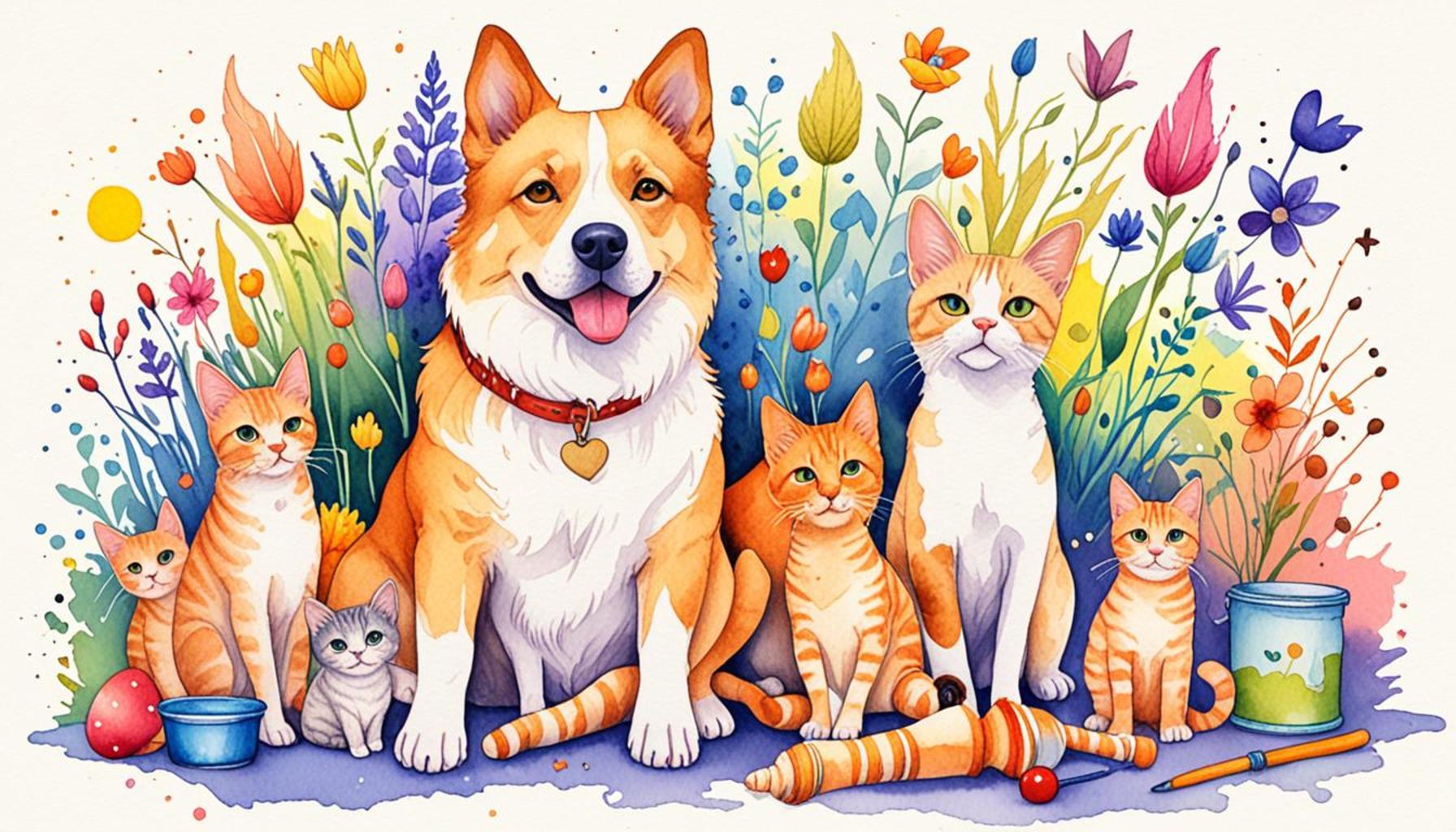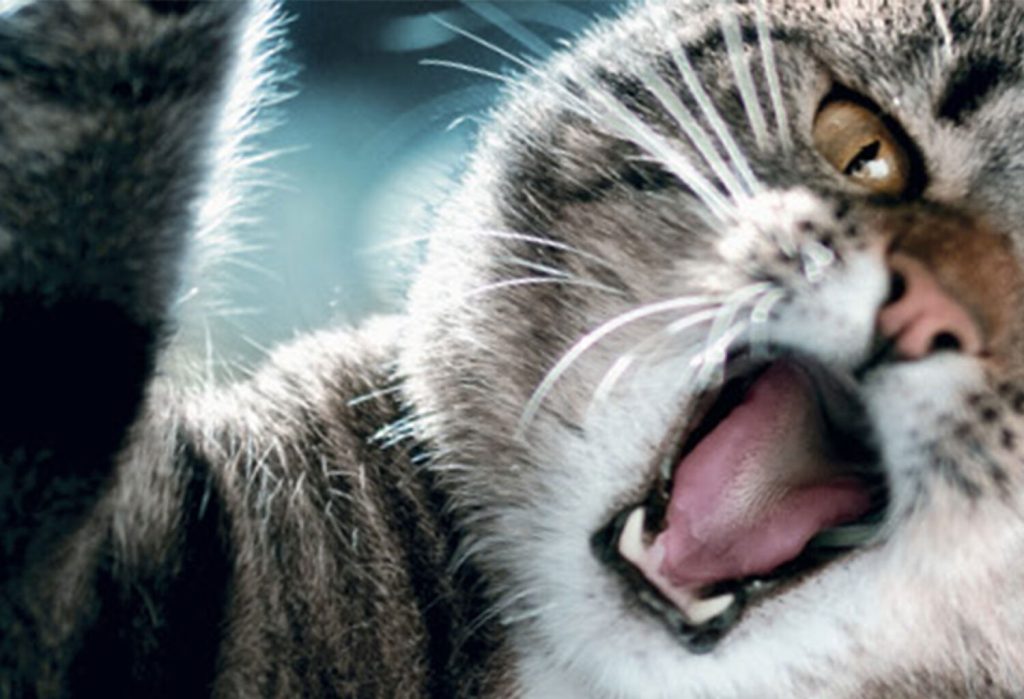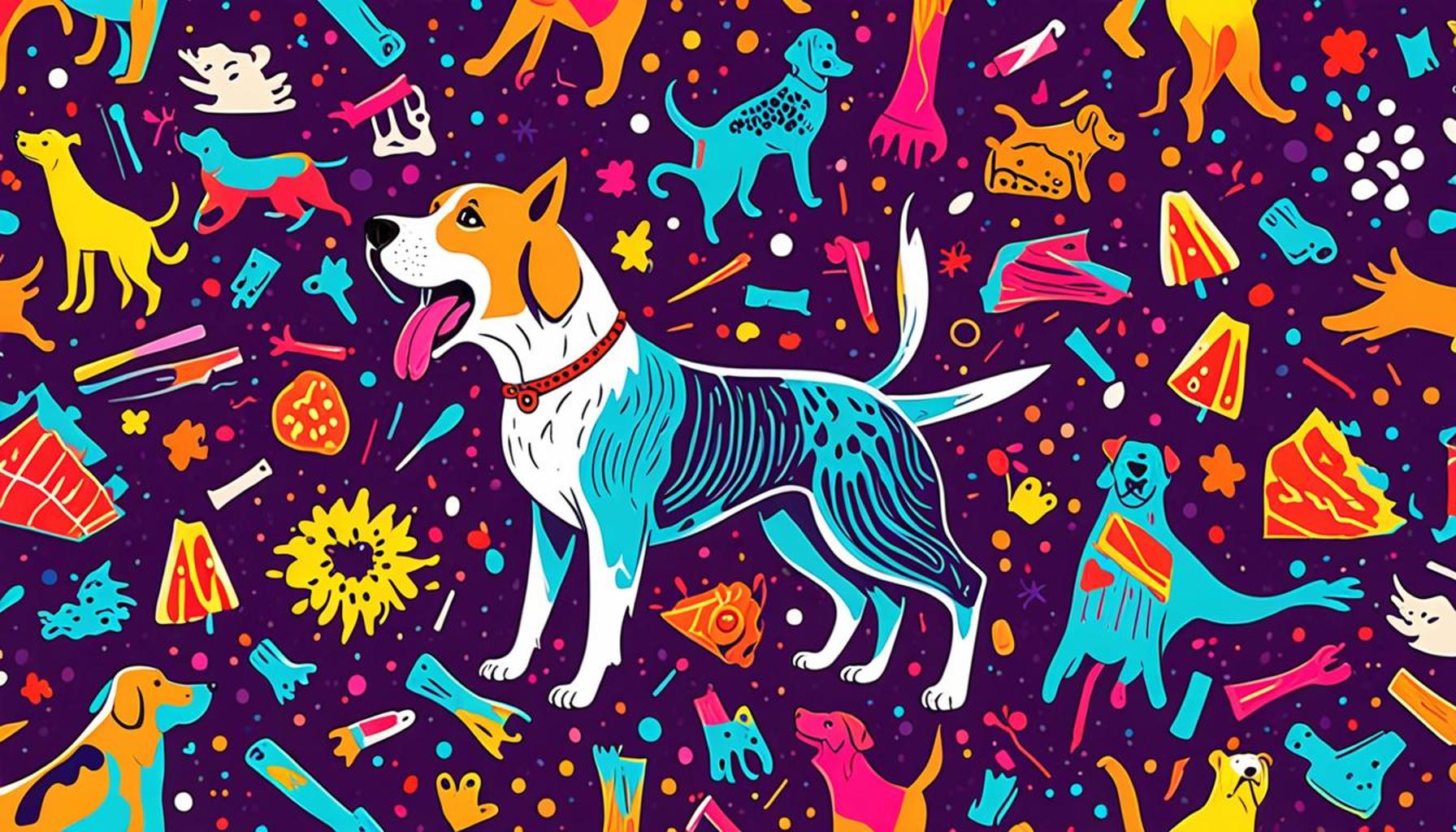How Age Affects the Behavior of Dogs and Cats

Understanding Age-Related Behavior in Pets
The companionship we share with our pets can be immensely rewarding, yet it also comes with a unique set of challenges as they progress through their various life stages. The behavior of dogs and cats evolves significantly as they age, which can deeply impact their interactions with us and their environment. By recognizing and understanding these changes, pet owners can tailor their care and support, ensuring their beloved friends lead fulfilling, comfortable lives.
Socialization Skills
The socialization skills of pets shift as they mature. In their formative years, puppies and kittens are often exuberant and playful, seeking out interaction not just with humans, but also with other animals. This stage is vital for their development, allowing them to learn boundaries and social cues through play. For instance, a playful puppy might enthusiastically chase after a squirrel or engage in spirited play fighting with siblings. However, as they transition into seniority, many dogs and cats tend to adopt more solitary behaviors. An older cat, for example, might prefer lounging in a sunbeam rather than engaging in a vigorous game of chase. Understanding this preference can help pet owners create an environment that allows for both social interaction and solitude, catering to the needs of their aging pets.
Energy Levels
Energy levels are another critical factor that shift with age. Young pets typically exhibit boundless enthusiasm and require ample exercise and playtime to expend their energy. A lively puppy may require several daily walks and play sessions, while a kitten might need interactive toys and climbing structures to keep active. In contrast, as pets grow older, they often display a marked decrease in energy and overall activity levels. Senior dogs might prefer short, leisurely walks and more time resting, while older cats might spend most of their day napping. Recognizing these energy changes allows pet owners to adjust their activity routines, ensuring that their pets remain healthy and engaged without overexertion.
Cognitive Abilities
Aging can also affect a pet’s cognitive abilities, leading to behaviors often associated with cognitive dysfunction syndrome. This condition can mirror Alzheimer’s disease in humans, resulting in confusion, changes in sleep patterns, and altered responsiveness to training—or, in some cases, a reluctance to engage in previously enjoyed activities. For instance, a once eager dog may start to forget previously learned commands or may become disoriented in familiar surroundings. Understanding these cognitive changes can help pet owners provide the necessary mental stimulation and care required to enhance their pets’ quality of life during their twilight years.
As pets journey through their various life stages, their responses to training, stress, and interactions with other animals become more nuanced. By grasping how age impacts behavior, pet owners can gain invaluable insights into fostering a nurturing environment that meets their pet’s unique needs. Join us as we explore the age-related behavioral changes in dogs and cats, offering a comprehensive guide to improve your relationship with your cherished companions!

LEARN MORE: Click here to discover why disease prevention is crucial for your pets
Behavioral Changes Across the Lifespan
As pets advance through their lifespan, numerous factors influence their behavior, shaping their interactions and overall personality. Understanding these age-related behavioral changes can enhance the bond between owners and their furry companions. According to a study published by the American Animal Hospital Association, the aging process in pets often leads to distinctive modifications in temperament and behavior, which can vary widely between dogs and cats.
Playfulness and Engagement
One of the most noticeable aspects of aging in both dogs and cats is the decline in playfulness and engagement. Young animals are typically keen on exploring their environment, engaging in playful antics that provide social interaction and physical exercise.
- Puppies love to wrestle, chase balls, and engage in tug-of-war, whereas kittens enjoy stalking feather toys and pouncing on unsuspecting ‘prey’—often their owner’s hand or foot.
- As these pets mature into adulthood, their play often transitions to more structured interactions, with an emphasis on learning commands and performing tricks.
- However, with the onset of seniority, both dogs and cats frequently show a marked decrease in their desire to play, opting instead for shorter bouts of engagement or periods of rest.
For instance, an elderly dog might prefer to lie beside its owner rather than engage in a game of fetch, while a senior cat may ignore favorite toys in favor of curled-up comfort. Recognizing these shifts can lead to a more satisfying relationship for both pet and owner.
Response to Training
Age also significantly influences a pet’s ability to learn and respond to training. Young animals are generally eager to learn, quickly acquiring manners, commands, and tricks through positive reinforcement and consistency. However, as pets grow older, their capacity for learning may diminish due to several reasons, including declining cognitive function and reduced energy levels. This can lead to:
- A slower response to commands, requiring more patience from owners.
- A tendency to forget previously learned behaviors, as noted by various veterinary professionals specializing in geriatric pet care.
- A shift in motivation, as older pets may lose interest in training sessions that once excited them.
Incorporating short, engaging training sessions and using treats that cater to their preferences can rejuvenate an older pet’s interest in learning. Adjusting expectations based on age can foster a more respectful and understanding relationship.
Emotional Responses
As pets age, their emotional responses can also fluently alter. With increased wisdom often comes heightened sensitivity, leading to more pronounced fears or anxieties—changes many pet owners might overlook. For example, a once fearless dog could develop a fear of loud noises or unfamiliar environments, which may not have been an issue during their youth. Cats might become less tolerant of changes in their routine or environment, leading to signs of stress or discomfort.
Understanding these emotional shifts is crucial for pet owners in helping their furry companions navigate the latter stages of life with as much comfort and joy as possible. By acknowledging and adapting to age-related behavioral changes, pet owners can provide the love and support that their cherished companions need during these critical years.
Understanding Behavioral Changes in Senior Pets
As pets age, their behavior can significantly change, often influenced by various factors including health, environment, and overall energy levels. Understanding these changes is crucial for pet owners to ensure the well-being of their aging companions.
The Effects of Aging on Dogs
In dogs, age can lead to a decline in cognitive function, often referred to as Canine Cognitive Dysfunction (CCD). Symptoms may include disorientation, disrupted sleep patterns, and altered interactions with family members. As dogs age, their social behaviors might also shift; they may become less playful and more irritable or anxious. It’s also noteworthy that senior dogs might exhibit decreased energy, becoming less interested in walks or playtime, which can impact their physical health over time.
The Effects of Aging on Cats
Similarly, aging in cats can bring about significant behavioral changes. Senior cats may experience changes in appetite, lethargy, or even signs of increased aggression due to discomfort or pain. They may also become more reclusive and less tolerant of sudden changes in their environment, including new pets or even furniture rearrangements. It is essential for cat owners to recognize these signs, as they often indicate underlying health issues that require attention.
| Aspect | Behavioral Changes |
|---|---|
| Cognitive Function | Increased confusion and disorientation in both dogs and cats. |
| Social Interactions | Less playfulness and potential irritability, leading to serious behavioral shifts. |
Age-related behavioral changes in pets can be challenging for owners to navigate. Regular veterinary check-ups and maintaining a stimulating environment can help mitigate some of these effects, keeping both dogs and cats happy and healthy as they enter their golden years. Adapting to these changes is vital for fostering a continued bond and ensuring your pet’s quality of life remains high as they age.
EXPLORE MORE: Click here to discover innovative training methods
Adapting to Aging: Socialization and Health Concerns
The aging process not only affects the emotional and physical capabilities of dogs and cats but also deeply impacts their social behavior and health needs. As pets transition into their senior years, the way they relate to other animals and humans can change dramatically. These social transformations often stem from declining health, physical limitations, and evolving temperaments.
Social Interactions
As animals age, their social preferences might shift significantly, leading to changes in how they interact with their environment and other pets. Senior dogs and cats may become more reserved, losing the exuberant, friendly nature they once displayed in their youth. This change can manifest in various ways:
- Decreased Tolerance: An elderly dog might exhibit less patience with boisterous puppies or untrained dogs, possibly leading to aggressive or defensive behaviors. Similarly, senior cats may find younger cats’ antics overwhelming, opting for solitude instead of social engagement.
- Preference for Familiarity: Aging pets often find comfort in routine, displaying a greater affinity for familiar people, places, and activities. They might form stronger bonds with specific family members while being less interested in meeting new people or pets.
- Reactive Behavior: Cognitive decline can lead to confusion or anxiety in seniors, sometimes resulting in unexpected reactions to stimuli. For example, a normally gentle senior dog may bark excessively or hide when faced with new experiences or abrupt changes in their environment.
Owners can help ease these transitions by gradually introducing their pets to new individuals and environments, fostering a sense of security and familiarity. Regular socialization, though it may seem challenging, remains critical in maintaining the pet’s happiness and mental health.
Health Impacts on Behavior
Physical health issues often become more apparent as pets age, further complicating their behavior. Chronic health conditions such as arthritis, dental disease, or cognitive dysfunction syndrome (CDS) can directly influence how dogs and cats interact with their surroundings:
- Pain and Discomfort: A dog suffering from joint pain may become irritable, less active, or unwilling to engage in previously enjoyed activities. Cats with dental issues may become withdrawn or aggressive when approached, reflecting their discomfort.
- Cognitive Decline: Pets may experience symptoms akin to dementia, resulting in confusion, disorientation, or changes in sleeping patterns. For instance, a previously well-behaved dog may begin to howl at night or display pacing behaviors, a sign of distress.
- Changes in Appetite: Aging pets might lose interest in food or exhibit picky eating habits. A significant dietary change can affect energy levels and mood, resulting in a less interactive or jovial demeanor.
Routine veterinary check-ups become essential during this life stage, allowing for early detection and management of health issues. By ensuring that their pets receive appropriate medical attention and pain management, owners can significantly impact their animals’ quality of life and behavior.
Creating a Supportive Environment
To accommodate aging pets, owners should reassess their living spaces to create an environment conducive to comfort and security. Simple modifications, such as providing soft bedding, non-slip surfaces, and easy access to food, water, and litter boxes, are crucial in promoting a stress-free atmosphere. Additionally, incorporating adaptable play techniques that cater to their changing needs can be beneficial:
- Gentle Exercises: Instead of rigorous play, activities such as gentle walks or interactive toys that stimulate mental engagement may be more suited to senior pets.
- Calm Interactions: Spending quiet, quality time with pets or engaging in low-energy activities allows for bonding while respecting their comfort levels.
Recognizing and addressing these behavioral changes associated with aging is vital for pet owners. Through thoughtful observation and proactive adjustments, caregivers can ensure that their dogs and cats thrive in their golden years, continuing to enhance the joy they bring to family life.
DISCOVER MORE: Click here to learn how to decode your dog’s messages
Conclusion: Embracing the Golden Years of Our Furry Friends
In conclusion, understanding how age affects the behavior of dogs and cats is essential for fostering a loving and supportive environment as our pets transition into their senior years. Recognizing that aging pets may experience significant changes in social interactions, health, and overall temperament allows pet owners to adapt their care strategies effectively. These changes, including decreased tolerance for younger animals, a preference for familiar surroundings, and heightened sensitivity to pain or discomfort, all highlight the importance of being attuned to our pets’ needs.
Moreover, creating a supportive environment through thoughtful modifications and gentle engagement is critical to enhancing their quality of life. Simple adjustments such as providing easy access to essentials and encouraging calm, low-energy activities pave the way for a harmonious coexistence, even in the face of aging challenges.
As responsible pet owners, we must commit to regular veterinary check-ups and early interventions to manage any health issues that arise. This not only preserves their happiness but also strengthens the emotional bond we share. By embracing the understanding of how age influences our pets’ behavior, we can advocate for their well-being, ensuring that they continue to thrive and bring joy to our homes well into their golden years. It is in these precious moments that the depth of our companionship is truly realized, bridging both the past and present shared with our beloved companions.


